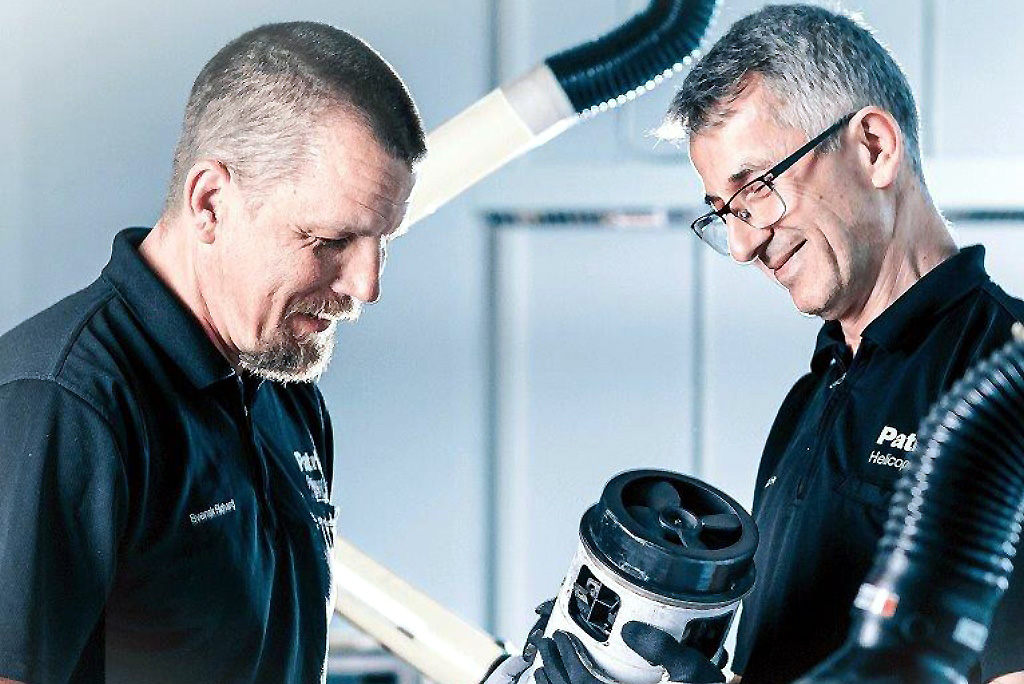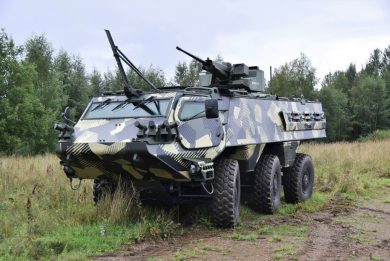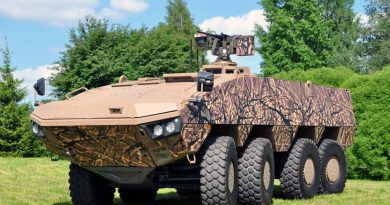
IDEX 2023: Patria introduces its Optime sustainement concept
Acquiring well-designed and manufactured defence systems is the first step to ensure armed forces efficiency and effectiveness. However the best weapon system does not withstand the wear of time, should it be intensively employed or not, as not only usage wear and tear will reduce its effectiveness, but technology advances will bring the need for upgrades. Enduring through-life maximum effectiveness and efficiency is not always easy task and at IDEX 2023 Patria, the well known Finnish defence group which 8×8 and 6×6 armoured vehicles succeeded in numerous bids, the selection of its 8×8 by Japan being only the last of a series, presented its Patria Optime concept.
“Patria Optime is designed to support operational efficiency in a complex and modern sustainement scenario. We all know that operational capability is not delivered through one fleet, the capability is a combination of many fleets on the land, in the air and at sea. And this is causing many overlapping sustainement solutions as OEMs are mostly concentrated in supporting only their own fleets and products,” Kari Vertanen, Senior Vice President, Fleet Availability at Patria said introducing the new concept.
It is clear that different equipment and fleets need different sustainement solutions. Rising complexity and costs do not concern only systems but also sustainement schemes. Balancing fleet availability and sustainement costs has become a key issue, and optimising the sustainement process is the solution according to Patria, hence the Optime name.
The starting point for this optimisation is the increasing amount of data coming from different fleets, which provide new opportunities for improving data analysis. However, Mr. Vertanen underlined, human knowledge and expertise are needed to understand when data is relevant and which are the concrete conclusions issued from the analysis.
According to Patria SVP Fleet Availability, the Patria Optime approach allows customers as well as OEMs to focus on their core missions and businesses. The solution is scaled according to customers’ needs, and can cope with a single or multiple fleets, in different operational environments, delivering the most feasible sustainement solution for each fleet and equipment.
As anticipated, Patria Optime does not considers only standard maintenance issues, but also all upgrades that are needed to maintain systems relevant throughout their whole life cycle, which is decades-long.
With over 100 years experience of maintenance on different fleets in different domains, Patria has a considerable know-how in the sustainement business. “Taking Finland as an example, its armed forces maintained top-notch availability of different fleets, while sustainement budgets have always been limited,” Mr. Vertanen underlines, adding that although such scheme did not exist in the past, Patria sustainement allowed savings for around 2 billion Euros. He also underlined that his company has years of experience in training and data collection from various fleets as part of mission support system, an experience that will be key in the new Patria Optime scheme.
In the core of Patria Optime we find modern tools and resources, and by combining customers fleet usage and maintenance data with planned usage scenarios and Patria expertise, the system can provide usage forecast and needed action plans to secure optimised fleet availability.
“We call our new concept a ‘house of services’, Patria Optime being the roof, supported by five main pillars, with a basement structure supporting those pillars,” the company SVP Fleet Availability explains. These five pillars are modules supported by digital tools and data driven services, these being the aforementioned basement. These five pillars are: Fleet availability planning and management; Maintenance, repair and overhaul; Lifecycle services, upgrades and modifications; Supply chain management services; Training products and services.
The system also relies on comprehensive customers and OEMs partnerships.
“The base of the concept comes from digital tools and data driven services, which ensure cost efficient operational readiness of the fleets. This is provided by data collected from fleet usage and maintenance which leads to analysing and combining them, in order to boost efficiency of maintenance work, supply chain, and operations, to improve predictability and produce alternative scenarios for decision-making purposes,” Mr. Vertanen added, before explaining how Patria Optime would be implemented.
The new sustainement scheme will be adopted through a phased process, working together with the customer. The first step is the feasibility study, which is an assessment of the current state of customer’s requirements, operating environment, equipment, and sustainement solutions. The study identifies a better understanding of the total life cycle costs and of current performances compared to requirements for the different fleets. Once the study is finalised, Patria proceeds with the customer to a more thorough value proposal phase, which sets up the scope and requirements for Patria Optime. This proposal is based on the assessment and identified improvement opportunities. According to the speaker, the Patria Optime concept would add value and enhance performances along with the estimates for its impact on financial and operational indicators. In the third step Patria will specify and tailor collaboration models with the customer, to ensure maximum value of Patria Optime in the short and long term.
The scheme announced at IDEX is brand new, therefore no cooperation agreement with OEMs on Patria Optime has yet been established, while agreements are already in place on single cases. “We propose ourselves as sustainement integrators,” Kari Vertanen told EDR On-Line after the press conference, “and we look for win-win-win situations, that might i.e. bring to joint-ventures with national companies.” Asked on the time needed for a Patria Optime scheme to become profitable, he told us that in the first seven to eight years sustainement costs should remain constant, cost reduction then starting allowing considerable savings.
Photo courtesy Patria


